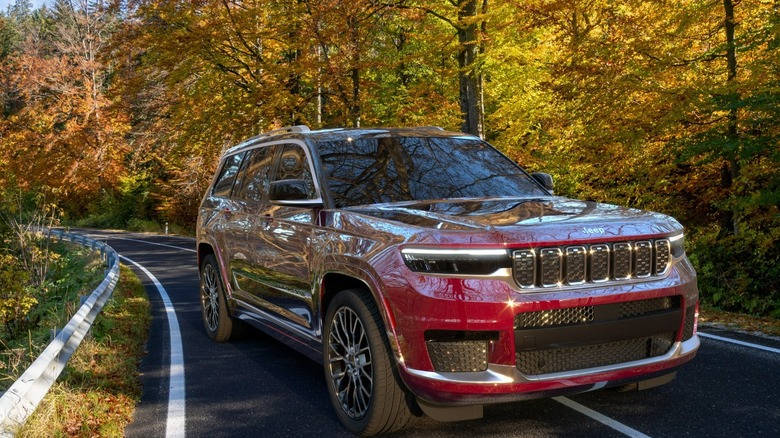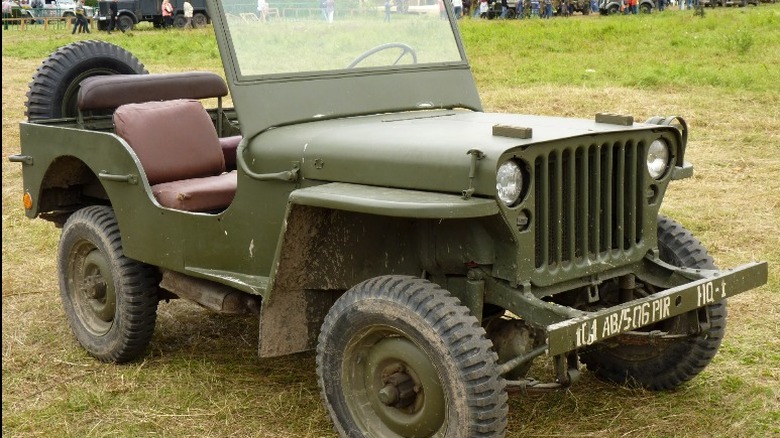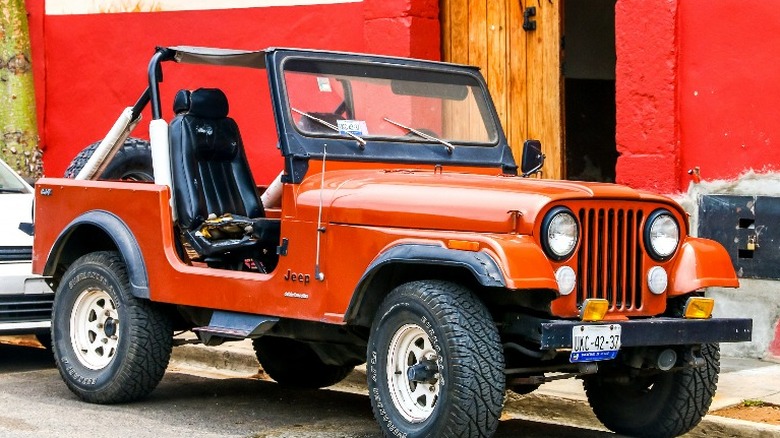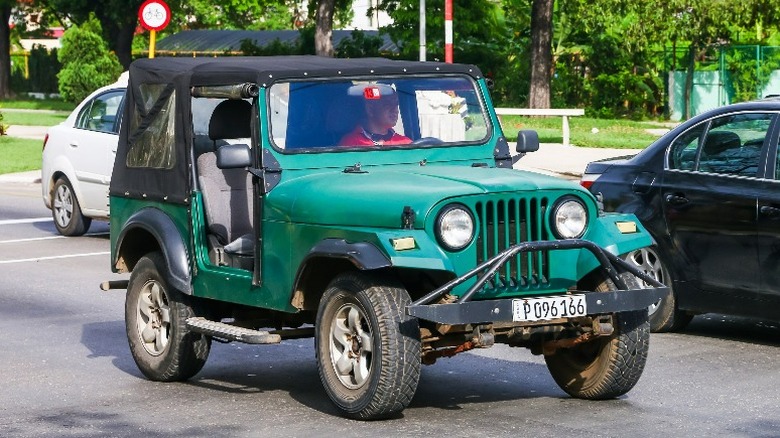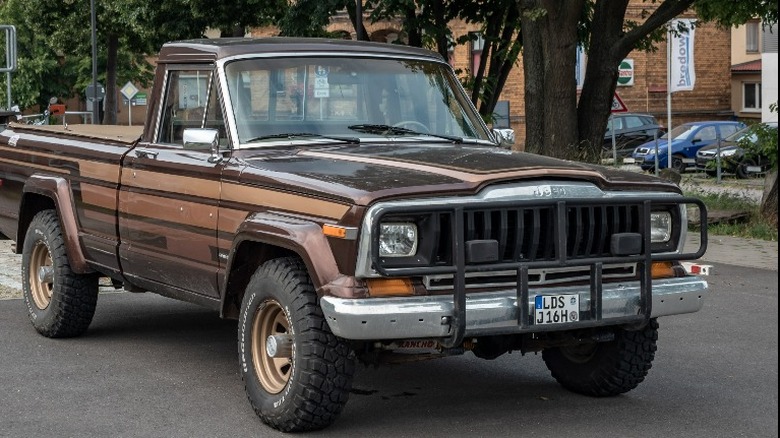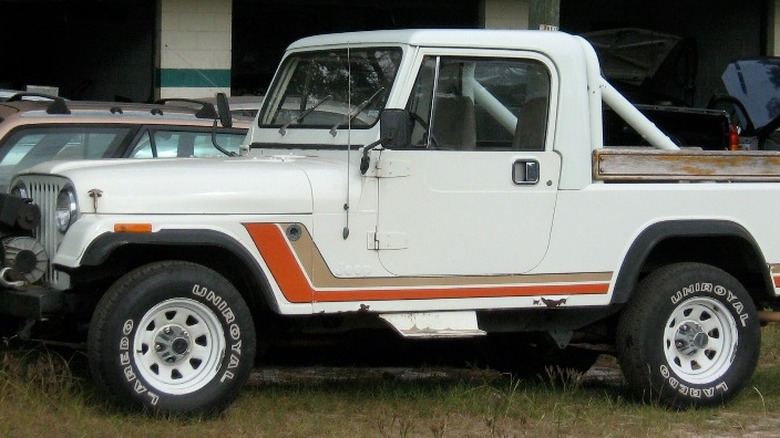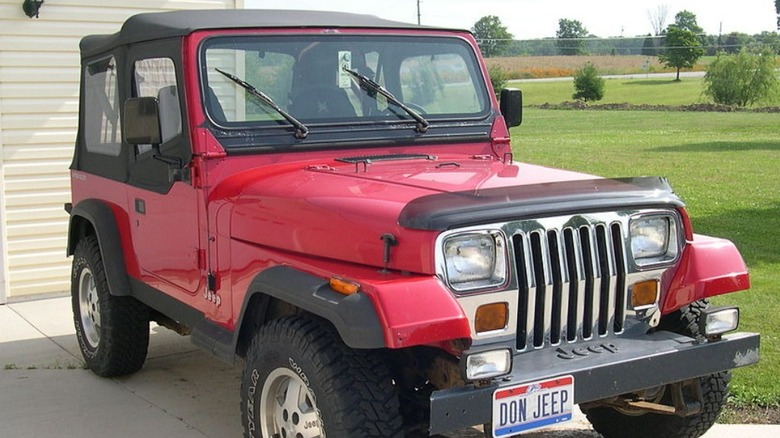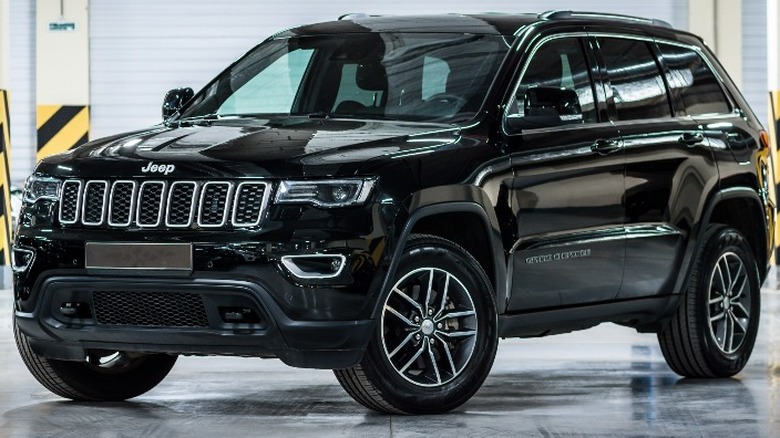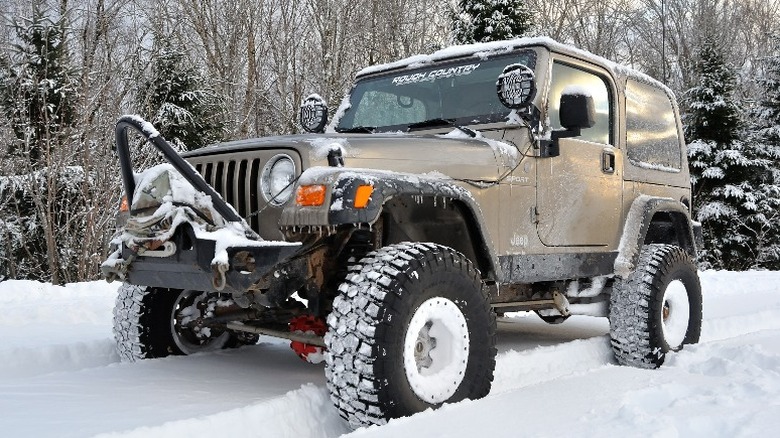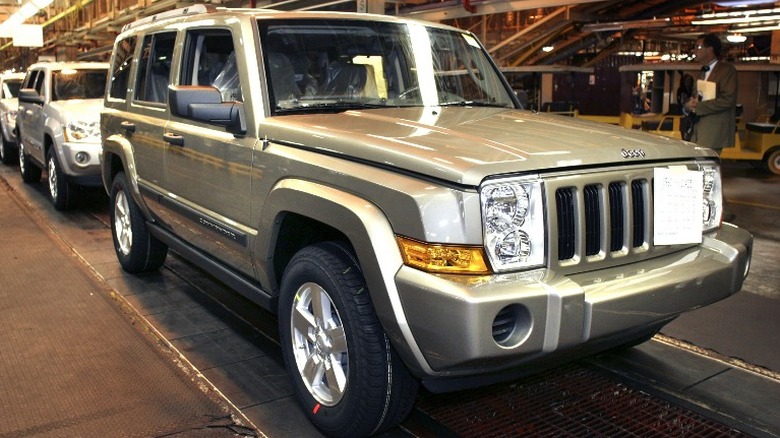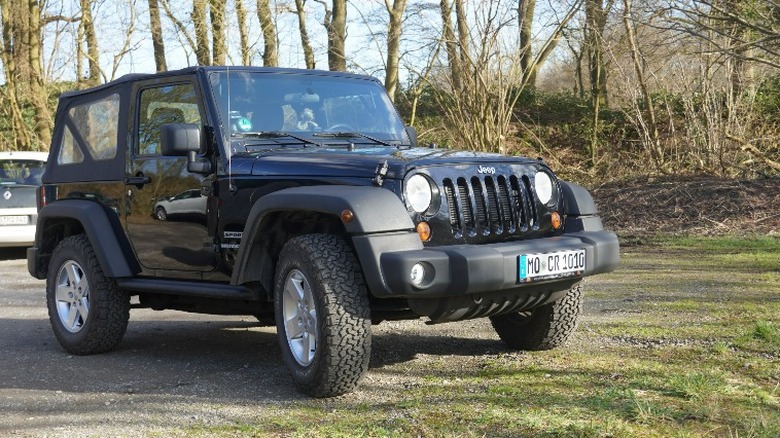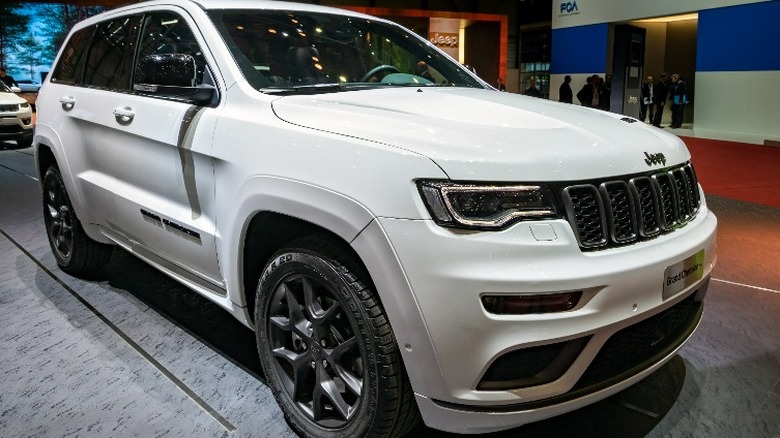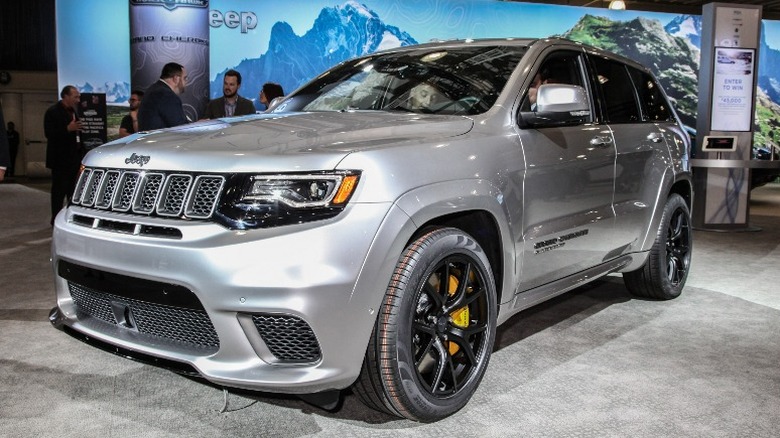The 12 Best Jeeps Of All Time
For more than 75 years, Jeep has been producing some of the most iconic vehicles in the automotive industry, establishing itself as one of the most recognizable car brands in the world. Starting with a military vehicle built by the Willys-Overland company, Jeep made a significant contribution to the eventual victory in WWII, setting the standard for robust and durable, four-wheel-drive off-road transportation.
The Jeep design is so fundamental, it has survived through the years despite frequent changes in company ownership, creating a brand with a distinct identity. Stellantis, the company formed by the merger of Fiat Chrysler Automobiles (FCA) and PSA Group in 2021, directs the development of Jeep automobiles and now manufactures vehicles in six countries and sells cars in more than 140 countries.
Today, the automaker produces SUVs that provide ample space for adventure gear or just the weekly groceries, a comfortable ride on city streets, and off-road capabilities that take the driver and passengers to places unreachable by rival vehicles. The modern-day Jeep is the culmination of contributions from some of the best Jeeps made during its long history.
Here are 12 of the most innovative and versatile Jeeps distinguished as design leaders or best sellers making a meaningful contribution to modern Jeep SUVs.
1941 to 1945 Willys MB
Produced during World War II (1941-1945), the Willys MB may or may not be the grandfather of all modern-day off-road vehicles, but it is undoubtedly responsible for spawning a long and highly successful line of rugged Jeep vehicles and SUVs. In July of 1941, the U.S. War Department awarded Willys-Overland a contract to fulfill its production needs of 16,000 vehicles.
The Army's vehicle specifications included four-wheel drive, a crew capacity of three, 75 inches or less wheelbase, a fold-down windshield, an engine producing 85 lb-ft (115 N m) of torque, an empty weight not exceeding 1,300 pounds (590 kg), and a 660 pounds payload. The Willys MB met the requirements (except for the weight) with a 134.2 cubic inch four-cylinder engine producing 60 horsepower at 3600 rpm and 95 lb-ft of torque at 4000 rpm.
Willys designed the vehicle for the most demanding and extreme military and off-road conditions. The body was entirely open with no doors allowing the driver and passengers to quickly jump in or out under extreme conditions. Willys stained the MB dark green with a special paint that did not shine in the sun to camouflage it from the enemy. The windshield folded flat on the hood to reduce the vehicle's visible shape and permit aiming and shooting a weapon straight ahead. Willys mounted hand-operated wipers on each side of the windshield. The heavy combat wheels bolt together to facilitate field repair and transport the vehicle for a significant distance on deflated tires.
1945-49 Jeep CJ-2A
While Willys-Overland was mass-producing the lightweight, four-wheel-drive Willys MB for the military during WWII, the company began planning the production of off-road vehicles for public use. After testing two prototypes, the CJ-1 (Civilian Jeep) and the CJ-2, Willys Overland started marketing the CJ-2A to the agriculture industry for farming, ranching, and other industrial applications. Production began in 1945.
The CJ-2A shared DNA with its military ancestor, the MB, featuring an open body, no doors, and the same tailgate and side-mounted spare wheel. The first batch of Willys-Overland CJ-2A models, referred to as the "Universal Jeep," used the same powerplant as the MB. The L-134 Go-Devil engine, with a displacement of 134.2 cubic inches, an L-head design with valves parallel to the cylinders, produced 60 hp at 4000 rpm and 105 lb-ft of torque at 2000 rpm. The CJ-2A T-90 three-speed transmission replaced the MB's T-84.
However, the newer CJ-2A is most easily distinguished from the MB by its large and flush-mounted headlights and the seven-slot front grille that replaced the MB's nine-slot grille. Willys-Overland offered several options for the CJ-2A, including a front passenger seat, rear seat, canvas top, and heater for the cabin. Exterior equipment options included front Power Take-Off (PTO), rear PTO, capstan winch, belt pulley drive, rear hydraulic lift, snowplow, welder, generator, heavy-duty springs, driveshaft guards, and side steps.
According to KaiserWillys.com, during its five-year production run, Willys-Overland produced 214,760 units, most sold for civilian purposes but others for military objectives worldwide.
1955-83 Jeep CJ-5
In 1955, Kaiser introduced the CJ-5, converting the Willys MD surplus army jeep into a more powerful, durable, and comfortable vehicle. The CJ models are a series of small, open-bodied off-road vehicles that became consumer classics and helped define the Jeep brand. Over nearly 30 years of production (one of the longest runs of any single Jeep model), the CJ-5 models survived multiple changes in corporation ownership, including Willys, Kaiser, AMC, Chrysler, DaimlerChrysler, and FCA.
Furthermore, Jeep made many modifications to the CJ-5, evolving the model from a short low-geared, underpowered post-WWII military vehicle into one of the first Jeeps with a pushrod V-8. Several engines powered the CJ-5 during its lifetime, including the original Willys "Hurricane" F-head four-cylinder and the Buick 155 horsepower 225 cubic inch (3.7L) V-6 Dauntless. According to Motor Trend, perhaps the most significant change to the CJ-5 occurred in 1972 when the American Motors (AMC) company, that had replaced Kaiser ownership in 1970, retired the GM engine replacing it with its own engine: the one-barrel 248 cubic inch (4.2L) and the AMC 304 cubic inch (5L) V-8 engine.
The change impacted the CJ-5 body shape. Jeep stretched the hood and fenders five inches (127 mm) and the wheelbase three inches (75 mm) to make room for the upgraded engine. The CJ-5 is one of the best Jeeps of all time for its longevity and for helping make off-roading accessible to buyers looking for a comfortable ride.
1971-88 1955-83 Jeep CJ-5
While the Jeep brand is well known for its classic line of off-road and SUV models, it is perhaps less renowned for its pickup trucks. However, the J-Series powertrain and drivetrain made the Jeep trucks much more than just vehicles used for hauling a load. Today, they are in high demand by buyers looking for previously-owned off-road vehicles.
Jeep started the 1970s offering its trucks with a standard straight-six engine, an optional 5.4-liter V-8 with 250 horsepower, and a Buick 5.7-liter V-8 that produced 230 horsepower. The company also offered an AMC 304 cubic inch (5.0 L) 210-horsepower V8 as an optional engine from 1971 to 1972 and replaced the six-cylinder with a 4.2L inline-six producing 112 horsepower. Buyers had a choice of several other V8 engines until the end of production in 1988. These included the AMC 360 cubic inch (5.9L) producing 195 hp with 295 lb-ft of torque and a massive 6.6-liter V8 with 225 hp and 320 lb-ft of torque.
In 1974, Jeep upgraded the J-Series to the Quadra-Trac 4WD. The system allowed each wheel to rotate at different speeds, and a third slip differential distributed power automatically between the rear and front wheel axles. In 1977 Jeep added the part-time manual Dana 4WD system that operates with power to the rear wheels only until 4WD is manually engaged. In 1983, Jeep replaced the Qudra-Tac with the full-time 4WD Selec-Trac system (optional for the J10) featuring a two-speed transfer case.
1981-85 CJ-8 Scrambler
Small, lightweight Japanese pickup trucks gained popularity with the American public in the early '80s. The utility of a pickup with a small-sized bed and fuel efficiency appealed to the buyer looking for a daily driver with the capability of occasionally hauling a modest load. While Toyota and Datsun supplied many of the vehicles, American auto manufacturers also offered mini-pickups such as the Dodge D-50 (Mitsubishi), Chevy LUV (Isuzu), and the Ford Courier (Mazda).
In 1981, Jeep jumped into the market with its CJ-8 Scrambler, a hybrid between the long-wheelbase CJ-7 and a pickup truck that many enthusiasts consider the predecessor to the 4x4 Wrangler. Jeep made the CJ-8 Scrambler with a longer wheelbase (ten inches) and overall length (two feet) than the CJ-7. While the 151-cubic inch four-cylinder was the standard engine, most buyers opted for the AMC 258-cubic inch inline-six, coupled to a four- or a five-speed manual transmission. Jeep also offered a three-speed Borg-Warner automatic. All the Scramblers came standard with four-wheel drive, featuring the Dana 300 transfer case and locking hubs.
Although the benefits of the longer CJ-8, offered in three trim levels, and Jeep's reputation for durability made the Scrambler an excellent off-road vehicle that served as a trusty workhorse, sales were disappointing. Production totals fell short of 28,000 units between 1981 and 1985. Today, used CJ-8s in good condition with minimum mods sell in the $8,000 range.
1987-95 Wrangler YJ
In 1987, the Wrangler YJ replaced the AMC CJ-7, with minor changes to the body and frame. The most notable feature, the controversial square headlamps, made the XJ instantly recognizable. While AMC built the XJ with Jeep's traditional off-road capabilities, the company incorporated features designed to please the casual, everyday driver. Jeep enhanced the cabin comfort and lowered the ground clearance to make entrance and exit easier. By 1988, the company added locks to its steel half doors and installed improved seals for its soft tops.
The YJ still supported a leaf spring suspension, albeit with wider springs, and added sway bars to improve handling. A corrosion-resistant galvanized sheet metal frame discouraged rust, and a quieter transfer case reduced noise. The initial XJ model, produced until 1991, featured a 2.5-liter straight-four producing 117 horsepower and 135 lb-ft of torque or an AMC 4.2L straight-six generating 112 horsepower and 210 lb-ft of torque. A later YJ model came with a more powerful 4.0L six-cylinder producing 180 hp and 220 lb-ft of torque. According to Know Your Wrangler, Jeep paired the four-cylinder engine with a four-speed manual transmission until 1994 when it added the TF 904 automatic transmission option. The company offered six-cylinder engines with the TF 999 automatic transmission or the BA-10/5 five-speed manual from 1987 to 1990, and the AX-15 five-speed manual from 1991 onwards.
The YJ models are among Jeep's most durable models with some original owners still driving them daily after more than 30 years.
1993-98 Grand Cherokee
Despite Jeep's solid reputation as a superior off-road vehicle with its roots in military equipment, the Grand Cherokee helped distinguish the brand from other remarkable SUVs in its class such as the Toyota RAV4 and the Ford Explorer. The Grand Cherokee has consistently been one of the most well-rounded and reliable vehicles on the market.
During the five years of production, the original Jeep Grand Cherokee introduced several "firsts," and consistently performed better than the competition. For the 1993 model year, Jeep introduced the first SUV driver's side airbag, made four-wheel antilock brakes standard, and offered the most efficient air conditioner in its class. The Grand Cherokee also used a unibody structure that was stiffer and lighter than the body-on-frame assembly employed by most competitors, resulting in a superior ride, better handling, and lower noise both on- and off-road.
The Grand Cherokee came standard with a 4.0L six-cylinder engine producing 190 hp and 235 lb-ft of torque mated to a five-speed manual transmission or an optional four-speed automatic. According to Jeep Specs, in 1993, Jeep equipped the top-of-the-line Grand Wagoneer with a 5.2L V8 generating 220 horsepower and 285 lb-ft of torque. In addition to the two-wheel-drive models, Jeep offered three 4WD systems: part-time Command-Trac, full-time Selec-Trac, switchable between 2WD and 4WD, and Quadra-Trac, an always-engaged 4WD system. The 1993-98 Grand Cherokee's innovations, a wide range of engine and 4WD choices, and impressive on- and off-road performance make it one of the best Jeeps of all time.
1997-2006 Wrangler TJ
The Wrangler TJ, with its round headlights, brought back the classic open-top off-roader appearance to the Jeep line, but the vehicle's appeal came from more than its iconic styling. A robust chassis, powerful engines, and precise dimensions made the TJ an ideal vehicle for dirt trails, steep climbs, and muddy conditions. The 1997-2006 Wrangler TJ used several engines during its production, but the best known is the 190 horsepower 4.0-liter AMC inline-six producing 235 lb-ft of torque. Introduced in 1986, the engine powered Wranglers, Wagoneers, Cherokees, Grand Cherokees, and Comanches. The durable and reliable powerplant often cranked out upwards of 300,000 miles before requiring an overhaul.
From 1997 to 2002, Jeep offered the Wrangler TJ with either a five-speed manual transmission or a three-speed automatic, and later added the much-improved four-speed automatic and a 6-speed manual. Jeep equipped all Wrangler TJs with four-wheel drive and a basic two-speed transfer case activated via a tug-style lever.
In 2003, Jeep launched the Rubicon edition that used a more robust 4:1 transfer case for slow-speed off-roading, and Dana 44 axles with selectable lockers, or an alternative limited-slip rear differential available with the manual transmission. The 2003 to 2006 Rubicons demand a significantly higher price than other Wrangler TJs in the resale market, but the model has become a staple for buyers looking for a top-of-the-line off-roader.
2005-10 Commander
The engineers at Jeep completely disregarded aerodynamic efficiency and fuel economy when designing Jeep's largest-ever SUV, the Commander. However, the retro-styled seven-seater with stability control, side curtain airbags, and four-wheel antilock disc brakes carries its passengers comfortably and safely in all types of weather. The first and only generation of the Jeep Commander shared its platform, unibody construction, independent front suspension, wheelbase, and track with the Grand Cherokee. However, the Commander is longer and taller. The family-oriented vehicle was the 2nd largest mass-produced vehicle in Jeep's history at the time of release.
Jeep offered the Commander in two trim levels. The base trim came with a 3.7-liter V6 that produced 210 hp, while the Limited trim came with a choice of two V8s: the 4.7-liter V8 that generated 235 horsepower and 302 lb-ft of torque, and the powerful 330 hp 5.7L Hemi that produced 368 lb-ft of torque. Jeep coupled all Commander engines with a 5-speed automatic transmission, and both the base and Limited trims were available with a 4x2 or 4x4 system.
The Hemi Limited edition Commander had a curb weight of 5,192 pounds, with a towing capacity of 7,716 pounds, but the SUV accelerated from 0 to 62 mph in a remarkable 7.4 seconds and reached a maximum speed of 129 mph. Although the Commander was a gas guzzler (a combined 15 mpg), its comfort, safety features, and classic styling make it one of the best Jeeps ever made.
2007-18 Wrangler JK
In 2007, Jeep made the first major overhaul to the Wrangler since 1998, making it the best SUV in the lineup. Not only were the off-road features unmatched by other models, but the vehicle also carried a price that made it hard to resist.
Jeep introduced the modified Wrangler with three trim levels: the X, Sahara, and Rubicon, each of which featured various amounts of off-road equipment. The base-level X used an NV241 Command-Trac four-wheel-drive system with a two-speed transfer case allowing for part-time use, Dana 30 axles in the front and Dana 44 rear axles and 16-inch wheels. The Sahara trim level offered most of the X off-road features but replaced the X's twin-tube setup with monotube shock absorbers for a stronger suspension. The Rubicon trim utilized the same four-wheel-drive system but with a 4:1 low-range gear ratio and heavy-duty locking differential Dana 44 axles. Additional off-road features included an electronically disconnecting front stabilizer bar for increased ground clearance and three underbody skid plates.
Jeep offered the upgraded Wrangler JK only with a new 3.8L V-6 engine producing 205 horsepower and 240 lb-ft of torque, mated to a six-speed manual or optional four-speed automatic transmission. While the 0 to 60 mph time of 9.5-10.5 seconds and a quarter-mile time of 17.5-18.5 seconds (according to Car and Driver) is not impressive, the outstanding offroad performance more than compensates for the mediocre straight-line acceleration and makes the JK one of Jeep's best.
2011-20 Grand Cherokee
The original 1993-98 Grand Cherokee set the standard for SUVs with unparalleled off-road capabilities but the 2011-20 version represents a more modern and sophisticated interpretation of the vehicle's familiar shape and features. While the older Cherokee form was blocky, the new model's body demonstrates attention to aerodynamics. Without losing the traditional Jeep style, the SUV cuts through the air better with a 0.37 drag coefficient (compared to 0.41 on the old model).
Jeep offered the standard 2011-2020 Grand Cherokee with a new Pentastar 3.6L V6 producing 290 horsepower and 260 lb-ft of torque. Although the power is sufficient, the SUV has a curb weight of 4,850 pounds, and the engine must work hard during acceleration. The V6 Cherokee accelerates from 0 to 60 mph in 8.5 seconds and reaches the quarter-mile in 16.3 seconds on its way to a top speed of 134 mph. The optional 5.7-liter Hemi V-8 is better suited for the heavy SUV giving the Grand Cherokee a more effortless acceleration. The Hemi-equipped SUV accelerates to 60 mph in a more respectable 7.4 seconds, reaches the quarter-mile in 15.4 seconds, and achieves a top speed of 145 mph.
Perhaps the most impressive feature of the newer Grand Cherokee is its ride quality. The vehicle drives more like a crossover than an SUV. The four-wheel independent suspension absorbs bumps with ease and corners with confidence free of any top-heavy motions often associated with SUVs.
2018 Jeep Grand Cherokee Trackhawk
While the standard Jeep Grand Cherokee is a high-performance SUV with on-road features and off-road capabilities to satisfy most buyers, the Trackhawk takes performance to the next level. Fitted with a supercharged 6.2L Hellcat engine producing a whopping 707 horsepower and 645 lb-ft of torque, the Trackhawk is the most expensive Jeep ever made, but still, a good value when compared to other high-end SUVs in its class. The Hellcat-equipped Trackhawk uses an eight-speed automatic and an AWD system with launch control for flawless takeoffs. The transmission shifts smoothly on its own but features a manual mode activated by steering-wheel-mounted shift paddles that respond quickly.
The Trackhawk's 707 horsepower rating is identical to the Hellcat Charger and Challenger delivering mind-blowing acceleration. According to Motor Trend, the SUV accelerates to 60 mph in a mere 3.5 seconds, quicker than the Challenger, many high-end SUV rivals, and even some high-performance sports cars such as the McLaren 570S and the Porsche 911 Carrera 4S.
While the Jeep brand is best known for its off-road capabilities, the Trackhawk's exceptional performance also qualifies the vehicle for the track. The SUV's sport-tuned suspension and adaptive dampers are stiffer than those on standard Cherokees giving the Trackhawk superior handling. However, the fire-breathing chariot still rides comfortably and quietly over smoother road surfaces. With some of the best off-road features in the SUV segment and the exceptional power of the Hellcat engine, the Trackhawk may be the best of the best Jeeps ever made.
